APRIL 30

























APRIL 30
























We are thrilled to close our 2024-25 season with Grupo Corpo, Brazil’s leading contemporary dance company. It’s especially fitting to end this season—a season in which White Bird made a pronounced return to presenting stellar companies from outside the U.S—with a group that has long held a special place in our history. Among the dozens of international dance companies we have presented throughout our history, Grupo Corpo has remained an audience favorite, returning more than any other company. This marks their sixth return to Portland since their White Bird debut in 2001.


What keeps them coming back? Simple: Portland loves them, they love Portland, and the artistic quality of their work is never short of excellent.
Earlier this month, we announced our exciting 2025-26 season, our 28th. Our exciting upcoming season includes:
Three companies returning to White Bird completely revolutionized, after more than a decade away, Two companies "graduating" from the Uncaged Series to the White Bird Dance Series,
One blockbuster season closer, dedicated to the music of a beloved singersongwriter,
And zero reasons to miss it! Subscriptions are on sale now. You can find more information in our 2025-26 season brochures –available in the lobby tonight –and on our website at WhiteBird.org/subscribe.
We look forward to seeing you for next season’s opener, Complexions Contemporary Ballet on Oct. 2-4, 2025. In the meantime, we hope you have a wonderful summer!

Graham Cole, Executive Director
Board of Directors
Walter Jaffe & Paul King, Co-Presidents
Ken Edwards, Vice-President
Kim Allchurch Flick, Treasurer
Sandra Holmes, Secretary
Leroy E. Bynum, Jr.
Graham Cole
Lisa Mangum
Shawn K. Mangum
Nancy & George Thorn, Founding Board Members Emereti
White Bird Team
Graham Cole, Executive Director
Christopher Carvalho, Deputy Director
Jeff Forbes, Technical Director
Deanna Reeves, Director of Communication
Gretchen Westlight, Operations Manager/Executive Assistant
Mia Chavez Lysaght, Patron Services Associate
Natalie Anthony, Graphic Designer
Alexandra Kuhle, Graphic Designer



Artistic Director
Choreographer
Dancers
Répétitrices
Education Director
Maître de Ballet
Pianist
Director of Stage Engineering
Technical Director
Technicians
Wardrobe Assistants
Administrator
Administrative Manager
Financial Manager Secretary
Communication Director
Program Director
Executive Producer
Production Assistant
Director of Social Projects
Production
Paulo Pederneiras
Rodrigo Pederneiras
Ágatha Faro, Bianca Victal, Carlos Nunes, Davi Gabriel, Dayanne Amaral, Débora Roots, Edésio Nunes, Giulia Madureira, Hiago Castro, Isabella Accorsi, Jônatas Itaparica, Jonathan de Paula, Karen Rangel, Luan Barcelos, Lucas Saraiva, Malu
Figueirôa, Pablo Garcia, Rafael Bittar, Rafaela Fernandes, Tris Martins, Vitória Lopes, Walleyson Malaquias
Ana Paula Cançado, Mariana do Rosário
Carmen Purri
Elias Bouza
Anna Maria Ferreira
Pedro Pederneiras
Gabriel Pederneiras
Átilla Gomes, Murilo Oliveira
Alexandre Vasconcelos, Maria Luiza Magalhães
Marcello Cláudio Teixeira
Kênia Marques
Antônio Emídio Resende
Flávia Labbate
Cristina Castilho
Cláudia Ribeiro
Michelle Deslandes
Gabi Junqueira
Miriam Pederneiras


(Created in 1992)
Choreography: Rodrigo Pederneiras
Music: Marco Antonio Guimarães / UAKTI
Set Design: Fernando Velloso
Costume Design: Freusa Zechmeister
Lighting: Paulo Pederneiras
(Duration: 40 minutes)
Created in 1992, 21 was a turning point in GRUPOCORPO’s career after a decade of dancing to pre-existing music. Not only did they now dance to music written exclusively for them–they had done it before early on in the hits Maria Maria and Último Trem (both soundtracks by Milton Nascimento and Fernando Brant), but they also established that this was to become a house rule. It allowed Rodrigo Pederneiras to start building an extensive choreographic vocabulary with markedly Brazilianist inflexions that would become one of the company’s trademarks. A web of combinations of rhythms and tonalities around the number 21 were written on geometric scores specially created by Marco Antônio Guimarães–the artistic director of Uakti Instrumental Workshop and designer of the unconventional instruments that give them their unique sound. This music was used by Rodrigo Pederneiras for a choreography that pulsed with mathematical flavor and was the strongest and most instigating CORPO ballet so far. Through multiple repetitions of movement it reproduced the downward scale from 21 to 1; then it built eight small choreographic haikus; and finally it reached its climax at the end in a colorful infectiously enthusiastic number that alluded to Brazilian folk dances and countryside parties. The reds of downstage lights and the yellows of dancers’ costumes built up a tension that set the tone for the first part of the ballet while a gigantic quilt full of vibrant colors anticipated the climactic end, with skin-tight costumes alluding to the scenery’s patchwork.

(Created in 2017)
Choreography: Rodrigo Pederneiras
Music: METÁ METÁ
Stage design: Paulo Pederneiras
Costume Design: Freusa Zechmeister
Lighting: Paulo Pederneiras and Gabriel Pederneiras (duration: 40 minutes)
The rites of ‘Umbanda’–one of the most widely practiced Brazil-born religions, which resulted from a combination of ‘Candomblé’ with Catholicism and Kardecism–serve as the great source of inspiration for the aesthetic scene design of Gira.
‘Exu’, the most human of the‘Orixás’–without whom,in religions of African origin, the ritual simply won't happen–is the main poetic imagery which evokes the eleven musical themes especially created by Metá Metá, for Gira.
First and foremost, the artistic creators of Grupo Corpo had to delve into the universe of Afro-Brazilian religions in preparation for the theme proposed by Metá Metá. However, the performance is far from being a mimetic representation of these syncretic rituals. Instead, the choreographer Rodrigo Pederneirasre(constructs) the powerful glossary of gestures and movement he accessed as he experienced rites of ‘Camdomblé ’as well as ‘Umbanda’, particularly ‘Exu’ ceremonies (giras de Exu).
Paulo Pederneiras conceived the stage design as an installation or a non-setting, in which he covers the bodies of the dancers off stage with the same black tulle as the three walls of the black box,turning them into the ether and this way creating an eerie atmosphere of endlessness.
As for the costumes, FreusaZechmeister adopts the same language for the whole cast, both female and male dancers: naked torso and the other half of the body white skirts of primitive cutting and raw linen.

The contemporary Brazilian dance company Grupo Corpo, founded by Paulo Pederneiras in 1975, in Belo Horizonte, State of Minas Gerais, Brazil, debuted its first work, Maria Maria, the very next year. Featuring original music by Milton Nascimento, a script by Fernando Brandt and choreography by the Argentine Oscar Araiz, the ballet would go on to spend six years on stage and tour fourteen countries. But even though the piece was an immediate critical, popular and commercial success, the group´s distinctive artistic identity, its long-term popularity and its artistic achievements have been the fruits of a long, arduous journey. As a result, the group started operating in its own premises as of 1978.
While the success of Maria Maria was still reverberating throughout Brazil and in various European and Latin American countries, Grupo Corpo (literally Body Group in English) never stopped working, staging no less than six productions between 1976 and 1982. In the first phase of the group´s existence, the influence of Araiz, who in 1980 would write OÚltimoTrem , was evident in varying degrees in the dance troupe’s work. However, the company´s distinctive features and personality were chiefly molded by Paulo Pederneiras, the man responsible for sets and lighting the group´s performances and its artistic direction and the dancer Rodrigo Pederneiras, who left the stage in 1981 to assume the role of full-time choreographer.
In 1985, the company launched what would be its second great success: Prelúdios, a theatrical piece incorporating twenty-four Chopin preludes interpreted by pianist Nelson Freire. The show debuted to public and critical acclaim at the First International Dance Festival of Rio de Janeiro and would cement the group´s reputation in the world of contemporary Brazilian dance.
Grupo Corpo then entered a new phase, establishing its own unique theatrical language and choreography. Starting with an erudite repertoire featuring the works of Richard Strauss, Heitor Villa-Lobos and Edward Elgar, among others, the company began combining classical technique with a contemporary re-reading of popular Brazilian dance forms. This would become the group´s trademark.
In 1989 the company debuted Missa do Orfanato, a complex theatrical reading of Mozart´s Missa Solemnis k.139. Almost operatic in dimensions, this ballet became such an esthetic triumph that, nearly two decades later, it remains in the company´s repertoire.
The group underwent a radical transformation three years later with the production of 21, a ballet which confirmed the uniqueness of Rodrigo Pederneiras´s choreography and the unmistakable persona of the dance troupe. Utilizing the singular sounds of Brazilian instrumental group Uakti, as well as ten themes composed by Marco Antônio Guimarães, 21 leaves behind the group´s preoccupation with technical form and sees it taking apart melodies and rhythms in order to explore their underlying ideas. The decision to once again use specifically composed scores – a mark of the group´s first three shows in the 1970s – allowed it to further explore the language of popular Brazilian dance.
In the work that followed, Nazareth (1993), Rodrigo Pederneiras´s fascination with traversing the worlds of both popular and erudite music found a perfect opportunity for fuller expression. Inspired by the verbal games of Brazilian literary icon Machado
de Assis (1839-1908) and by the works of Ernesto Nazareth (1863-1934), a seminal figure in the formation of Brazilian popular music, the work was scored by composer and literary theorist José Miguel Wisnik. Though built on a solid, classical foundation, the production brought together in good-humored fashion the light-hearted and sensual elements inherent Brazilian popular dances.
The partnership of Grupo Corpo with contemporary authors has been such a success that scores composed especially for the company have become the norm, and each score has inspired a new creation. An exception came in 2004 with the production of Lecuona, a work that drew on thirteen love songs by the Cuban composer Ernesto Lecuona (1895-1963) and in which Rodrigo Pederneiras demonstrated his gift for the creation of pas- de- deux.
Beginning in the mid-1990s, Grupo Corpo intensified its international touring. Between 1996 and 1999, it was the resident dance company of the Maison de la Danse in Lyon, France. Several of the group´s creations (Bach, Parabelo and Benguelê) were first staged in Europe over this period.
Today, having created more than 40 choreographies, the Brazilian dance company gives performances in places as distinctive as Iceland and South Korea, the United States and Lebanon, Italy and Singapore, the Netherlands and Israel, France and Japan, Canada and Mexico.
The minimalism of Philip Glass, the vigorous pop and urban sounds of Arnaldo Antunes the primordial experimentalism of Tom Zé, the African sensibility of João Bosco, the metaphysical verse of Luís de Camões and Gregório de Mattos with the light touch of Caetano Veloso and Wisnik, the rootsy modernity of Lenine, the sound diversity of Moreno, Domenico and Kassin, the contemporary vision of Martin Codax’s medieval songs by Carlos Núñez and José Miguel Wisnik, the pop style of Samuel Rosa, the musical genius of Gilberto Gil, Grupo Corpo has drawn on all of these elements and more to produce shows of a very diverse character – cerebral, cosmopolitan, primitive, existential, tough – while always keeping in sight the company´s distinctive traits.


PAULO PEDERNEIRAS As founder and artistic director of GRUPO CORPO, Paulo Pederneiras, is also responsible for the lighting of the ballets and since 1996 he has also participated in the scenic design creation. Commenting on the light as a strong presence, which both illuminates and serves as a space for dancing, he states, “I think of the space the same way I think of the lighting. Sometimes the light is the space.”
“To see and understand: but understanding to Paulo, is a poor name for not knowing things, it’s a commitment with amazement or with reticence, which is at the core of each new work. This goes from the time the ballet itself is being imagined to the way the team works: “to question one’s own work is fundamental. It’s always a risk, but a productive risk. To try to see what one has and to try to undo or to dismantle one’s own methodology. Art must have that or no steps are taken forward. It’s either that or it will be a dishonest art”.
Besides his work with Grupo Corpo, Paulo Pederneiras has done lighting projects for several operas. He has also done set design for many exhibits. Of Grupo Corpo, it is stated that this “Brazilian company has great physical diversity. Each dancer’s movement is different, and yet the idea of being a group is not lost. That’s where the dance draws its strength from.” The words describe what happens with the bodies, but equally serve to describe the company. Under the direction of Paulo, Grupo Corpo made a virtue out of its diversities. And it continues making this virtue the principle of creation: a way of knowing and not knowing, a bet on the unknown in order to always reach a new dance, which will always be its own dance.
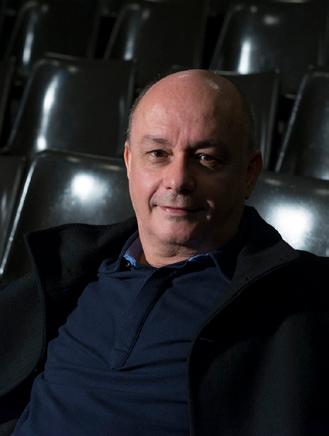
Choreographer
Rodrigo Pederneiras has been Grupo Corpo’s choreographer since 1978, and his work is recognized nationally and internationally. He has choreographed for the most important Brazilian companies. Outside Brazil he has choreographed for companies that include Deutsche Oper Berlin (Germany), Gulbenkian (Portugal), Les Ballets Jazz de Montréal (Canada), Stadttheater Saint Gallen (Switzerland), Opéra du Rhin (France), and José Limón Dance Company (USA).
The musicality of his compositions has awakened interest since his first works. It was as if his language sought the same spatiality of the music used in the choreographic work. The bodies of his dancers danced as if they were soundnesses in human form.
When he mastered this way of creating, he broke through the symmetry of the relationship between movement and music. He then started to construct increasingly sophisticated dialogs between music and dance with the bodies of his interpreters. His gesture became far richer, his calligraphy became more complex.
His works depict a choreographer who masters accurate amounts of plastic meaning and sense. The ruptures of the traditional ballet lines that he brings into performance construct new designs. In these, some kind of typical local atmosphere commence to emerge.
The choreographies by Rodrigo Pederneiras offer synthesis for the issues lying between the universal and the individual.

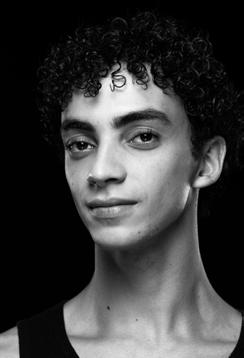
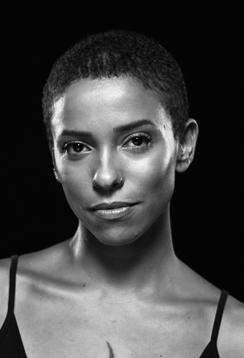

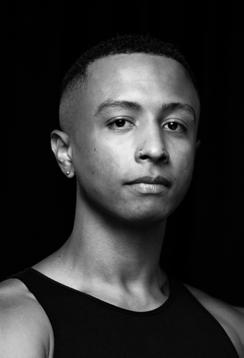
Ágatha Faro joined Grupo Corpo in 2017 having previously danced with Cia Sesc de Dança.

Carlos Nunes started his dance studies in 2007 and worked with Cisne Negro Cia de Dança before joining Grupo Corpo in 2024.
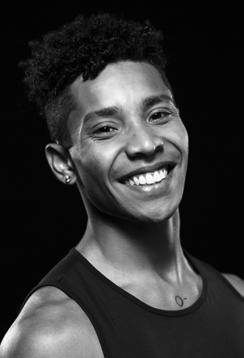
Dayanne Amaral joined Grupo Corpo in 2012 having previously danced with Cia de Dança Sesiminas. She began her dance studies in 2001.
Edésio Nunes started his dance studies in 2004 and worked with Cia de Dança Sesiminas before joining Grupo Corpo in 2018.


Hiago Castro began his dance studies in 2007 and has danced with São Paulo Companhia de Dança before joining Grupo Corpo in 2024.

Jônatas Itaparica joined Grupo Corpo in 2022 having previously danced with Theatro Municipal do Rio de Janeiro and Cia de Ballet de Dalal Aschcar. He began his dance studies in 2009.
Bianca Victal began her dance studies in September 2006. Before joining Grupo Corpo in June 2014, she danced with Companhia Jovem de Ballet do Rio de Janeiro and Companhia de Dança do Sesc.
Davi Gabriel started his dance studies in 2010. He danced with Dutch National Ballet, Acosta Danza, Cia Jovem Bolshoi-Brasil, Curitiba Companhia de Dança and São Paulo Companhia de Dança before joining Grupo Corpo in 2022.
Débora Roots joined Grupo Corpo in 2019 having previously danced with Cia Cisne Negro and Cia Mário Nascimento.
Giulia Madureira began her dance studies in 2006 and danced with Cia Jovem Bolshoi and Curitiba Cia de Dança before joining Grupo Corpo in 2022.


Isabella Accorsi before joining Grupo Corpo in 2022 worked with Cia de Dança Deborah Colker and Curitiba Companhia de Dança and began her dance studies in 2007.
Jonathan de Paula danced with Cia Sesi Minas and Compagnia Zapallà Danza before joining Grupo Corpo in 2019.
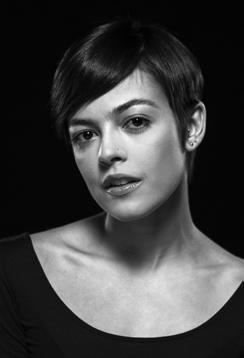
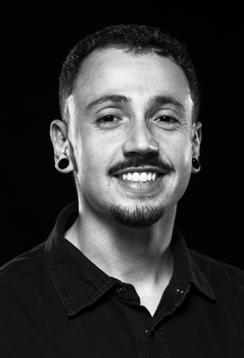
Karen Rangel after beggining her dance studies in 1997, danced with Cia Sesc de Dança. She joined Grupo Corpo in 2017.

Lucas Saraiva after beginning his dance studies in 2006, danced with Cia de Teatro e Dança Ivaldo Bertazzo, Bienal de Dança Contemporânea de Veneza and Cia de Dança Deborah Colker. He joined Grupo Corpo in December 2013.
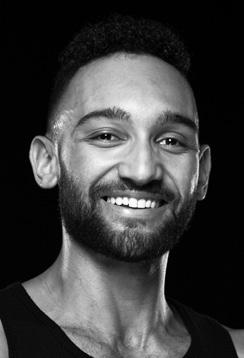
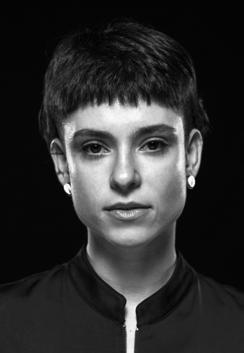
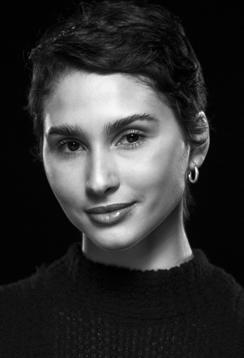
Pablo Garcia danced with Cia de Dança do Palácio das Artes before joining Grupo Corpo in 2024. He began his dance studies in 2009.

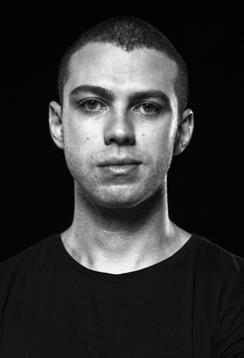
Rafaela Fernandes started her dance studies in 1998 and joined Grupo Corpo in 2011.

Vitória Lopes began her dance studies in 2007 and danced with Cia de Dança Deborah Colker before joining Grupo Corpo in 2022.
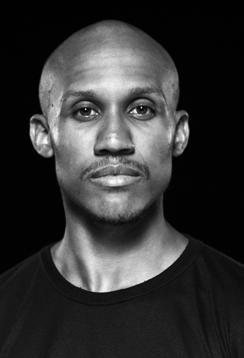
Luan Barcelos started his dance studies in 2003. He danced with Cia de Dança Sesiminas, Cia de Dança do Palácio das Artes, Cia de Dança Deborah Colker and São Paulo Companhia de Dança before joining Grupo Corpo in 2022.
Malu Figueiroa began her dance studies in 1990. She danced with Grupo Camaleão, Ballet do Teatro Castro Alves and Ballet Jovem do Palácio das Artes before joining Grupo Corpo in 2011.
Rafael Bittar started his dance studies in 2002 and danced with Cia Mario Nascimento before joining Grupo Corpo in 2012.
Tris Martins before joining Grupo Corpo in 2012 worked with Washington Ballet and São Paulo Cia de Dança. She began her dance studies in 1990.
Walleyson Malaquias before joining Grupo Corpo in 2022 danced with Ballet Jovem de Minas Gerais e Cia Jazz Emaline Laia. He began his dance studies in 2015.
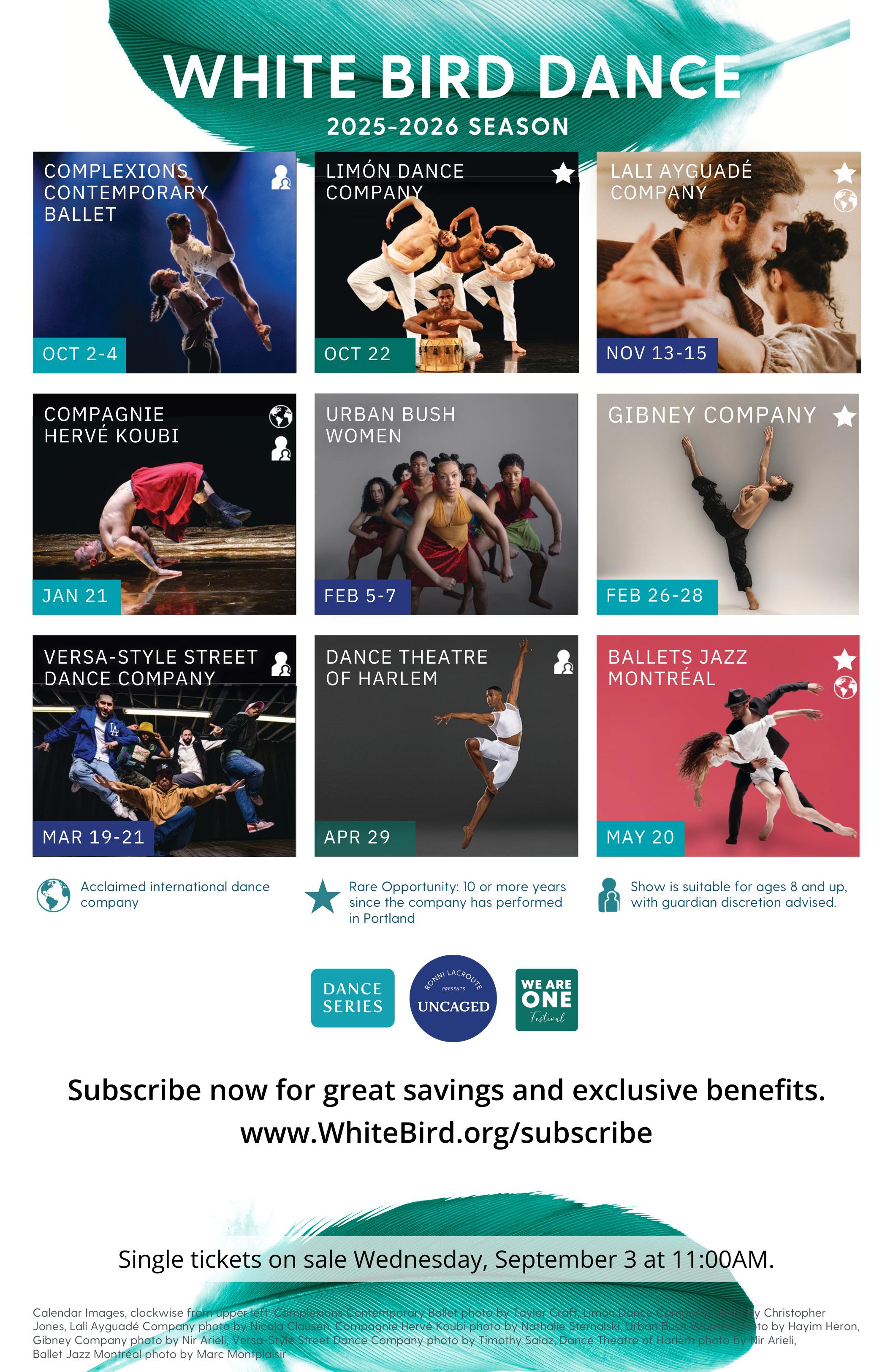
A Tribute to Those Who Soar with Us!
Our Flock List includes gifts made between December 28, 2023 and February 28, 2025. Those with total gifts of $100 or more are honored online (linked through the QR code to the right), and those giving $250 or more are listed below. For questions or changes regarding our Flock List, please contact Executive Director, Graham Cole at graham@whitebird.org
TITANIUM PATRONS ($10,000+)
Anonymous
Terry Bean
Andrea & Fred
Ken & Ann Edwards
James F. & Marion L. Miller Foundation
Ronni S. Lacroute Fund of Oregon Community Foundation
Lisa & Shawn K. Mangum
Marie Lamfrom Charitable Foundation
National Endowment for the Arts
Oregon Arts Commission
City of Portland, Office of Arts & Culture
Angela Roach
Ellen Walkley
DIAMOND PATRONS ($5,000+)
Anonymous
Autzen Foundation
The J & J Foundation
Joan Cirillo & Roger Cooke
George Eighmey & Peter Livingston
Marnie Frank
Virginia Belt & Curt Frye
Maryanne & David Holman
Jackson Foundation
Joanne & Steven Rizzo
Robert & Mercedes Eichholz Foundation
Janet Roberts & Ed Clark
Darci & Charlie Swindells
George & Nancy Thorn
Edyth Willard
GOLD PATRONS ($2,500+)
Creative West
Full Potential Fund
Sandra & Stephen Holmes
Lancefield Realty
Morel Ink
Michael Wood Richman & Jim Richman
Jaymi & Francis Sladen
Sarabelle Hitchner & Thomas Snell
Zupan's Markets

SILVER PATRONS ($1,000+)
Sherrie Barr & Philip Lewin
Leroy Bynum
Carol Schnitzer Lewis Fund of the Oregon Community Foundation
Denise Carty & Roger Brown Family Fund
Marina & Rafael Casiano
Roberta Davis
Marvin & Abby Dawson
Yvonne Deckard
Leslye Epstein
Marco Escalante & Dongni Li
Kim & Greg Flick
Ann & Edward Galen
Deborah Horrell & Kit Gillem Fund for Arts & Conservation
Nancy Goodwin & Albert Horn
Suzanne & Ero Gray
Connie Guist
C. Hall, In Honor of Celeste Miller
In Memory of Beth Hyams
Karen Henell & Gregg McCarty
Alan & Sharon Jones
KB Home
Anna S. King
Gloria Kondrup & Justin Rattner
Murray Koodish
Paul Lance & Jed Cohen
Barb & Randy Lovre
Carol Martin
Don Mustell & Nancy Sturken
John Eric Noran
Partners38
Ronald & Shirley Pausig
Naomi & Steve Price
Barbara Radovich
Dean Richardson
Ashley Roland & Jamey Hampton
Janet & Tom Schmitt
Marian & Elihu Schott Family Fund of The Oregon Community Foundation
Herb Trubo in memory of Steve Buchert
Anonymous
Elizabeth Arch
Abby Auch & Charles Auch
Faith Baynes
Mary & Joseph Bernert
Lisa Chickadonz & Christine Tanner
Amy & Gary Cole
Marvin & Abby Dawson
Dennis Deming & Corky Cortright
Justin WB Dune
Judith E Posey & Edward J Doyle
Ann & Ron Emmerson
Kimberly Freeman & Brian Yellin
Charles & Kyle Fuchs
Christine Gilmore
Valarie Grudier
Hotlips Pizza
Patricia Hurst
Dennis Johnson Fund of the Pride Foundation
Jim Kalvelage & Barbara LaMack
Paula Kanarek
Richie Kendall
Bonnie & Mike Leiser
Eric & Hollie Lindauer
James & Kathleen Meyer
Nicholas Miner
Steven Neighorn
Opsis Architecture, LLP
Stan & Susanne Penkin
Greg Phillips
John Ragno
Robert Rothery
Sue Sandford
Nancy Seruto
Leah Swetnam
Andrea Van
Heather Bacon-Shone
Lynne Barnes, MD
Kathleen Beland
Dr. Diana Bell
Janet Bowersox
Marcia & Richard Bushnell
Bradley Coffey
Danièle Colonna & Steve Jacobson
Barbara & Tom Cooney
Michael Davidson
Jack & Terri Duncan
Pat Evenson-Brady
Stuart Farmer
Barbara Fishleder & John Wolfe
Jerome & Mary Fulton
Paul Gehlar
Elinor Gollay & Jean S Krosner
Debra Gwartney
Evelyn Hamann
Colleen Howard
John Light & Patricia Barnes-Light
Edward Maurina III
Grace Moen
Martin C Muller
Blythe Olson
Mary Agnes Prosser & Noel Prosser
Sheila Ford Richmond
Leslie Rose
Sarah Rosenberg & Don Caniparoli
Ellen F. Rosenblum & Richard Meeker
Meredith & William Savery
Penelope Schott & Eric Sweetman
Steven Smith Teamaker
Christine Tell & Jeff Davis
Brian & Nikki Weaver
Anna Weber
Rhiannon Wood
Lark Wysham
Kathy Zeller & David Hill
